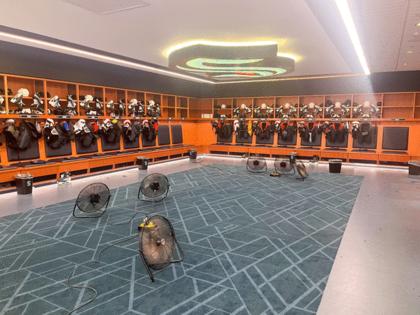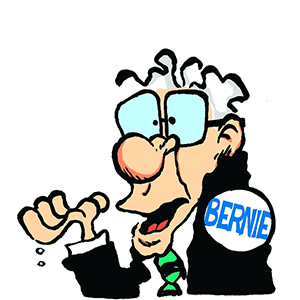How Kraken equipment staff deals with 'the worst smell in the world'
Published in Hockey
SEATTLE — Those who know, know. When the locker room door swings open at a well-loved ice rink, it’s an eye-watering assault on the senses. It conjures a thousand stinky feet, with notes of a full dumpster on an early August evening.
That’s bacteria feeding off sweat, made worse when gear sits in its juices in a warm, unventilated bag. Hockey stink is a scent unlike any other.
“It’s the worst smell in the world,” Seattle Kraken head equipment manager Jeff Camelio said, though he acknowledged he doesn’t notice it much after 18 NHL seasons and 2,003 games.
When a visiting high schooler doesn’t air out his equipment, Camelio said, it can stink up the whole rink. It doesn’t take too long for the stench to set in, especially at a practice facility. Most visitors don’t have high-tech solutions at best, and at worst, lazily toss their zipped bag into a garage or basement to ferment.
The latter method invites serious infections, plus another top contender for the worst smell in the world. If your cat relieved itself into your hockey bag, a Google search confirms you’re far from alone.
“You have to watch cats,” Monique Campbell, whose daughter Jessica went on to become the first woman behind an NHL bench this season, said. “They love the smell of a stinky bag.”
NHL players are often absolutely meticulous about their gear, but if left to their own devices, that bag will eventually smell like low tide. When the situation gets funky, the Kraken equipment mangers get sneaky.
“We won’t even say anything. (Gear) will just disappear,” Camelio said. “We’ll just wash them and then put them back like nothing ever happened.”
Seattle’s locker rooms at Kraken Community Iceplex and Climate Pledge Arena still smell perfectly pleasant with the help of advancing technology, and because the equipment staff has stayed on it.
“We take pride in trying to make sure our locker room doesn’t stink, for sure,” Camelio said.
The Kraken rely on a Sani Sport machine, which sanitizes the carpets, walls and benches but not the gear. That’s dispensed from a unit resembling an air purifier that they wheel in, which combines ozone and accelerated hydrogen peroxide to reduce risk of illness, not just stench.
“We want to make sure nobody’s getting a staph infection or any bacterial infections from any of their equipment,” Camilio said.
In addition to NHL, NFL and MLB teams, the U.S. Air Force and Army are among Sani Sport’s other listed customers.
The Kraken also rely heavily on a spray from Sports Sense and packets of Gear Halo, which hide out in players’ bags. A wave of dryer sheet smell hits whomever opens up the truck delivering their gear on road trips. It could be a lot worse.
Gloves tossed at assistant equipment manager Kris Stierwalt as players file off the ice for intermissions go directly onto a high-temperature dryer, covered in silver, looped coils. That’s older technology, but even older is the fleet of tried-and-true floor fans, tasked with drying and circulating.
Every damp glove has its own distinct musk, and no one knows that better than the equipment staff. That famous hockey stench differs slightly between players, Camelio said, depending on their diet and supplements.
“We go to unpack bags, like, ‘Oh, man, not this guy,’ ” Camelio said.
No one has to be that guy or gal. The first rule in fighting that foul little ecosystem growing in the forbidden hallway closet is to let it breathe. Air out the stinkiest pieces if possible — elbow pads, shin pads and gloves.
Kraken winger Jaden Schwartz, whose siblings played hockey as well, helped their mother out by leaving their gear outside whenever possible. Not everyone has the home layout for either, however.
In addition to generally being more expensive, goalie gear is harder to clean and dry fully. Hand washing is advised. But for most other equipment, the pros suggest sucking it up, grabbing a roll of quarters and hitting the laundromat occasionally.
“If it’s already gotten to the point where it smells, you can wash all your equipment, minus your skates and helmet,” Camelio said. “Then just air dry. If you keep up with it, you’ll notice a big difference.”
©2025 The Seattle Times. Visit seattletimes.com. Distributed by Tribune Content Agency, LLC.







Comments